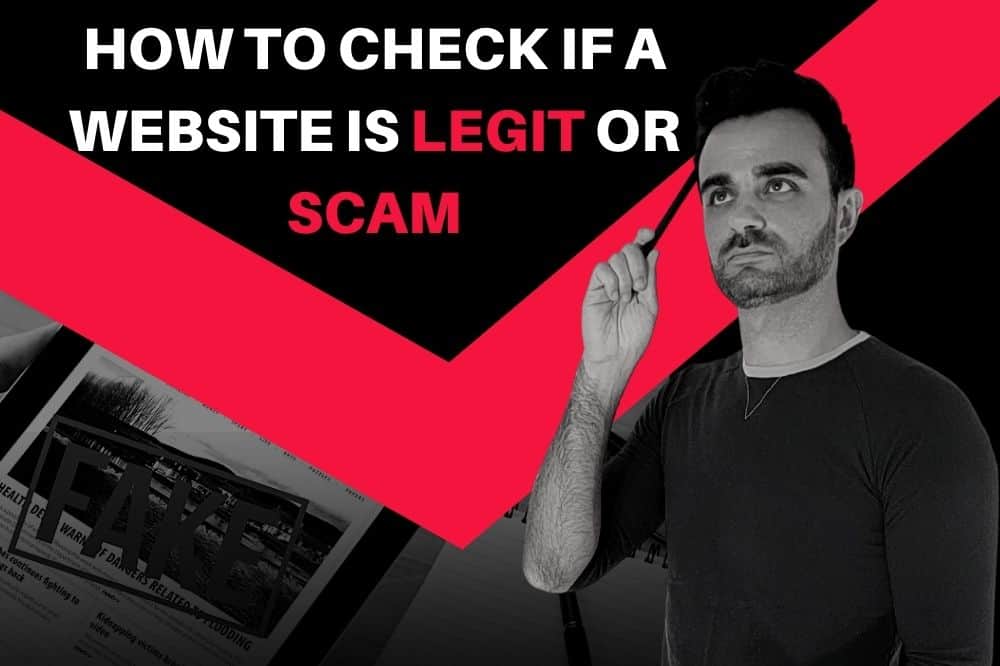Every year, one in 10 adults in the United States falls victim to online scams and fake sites. New forms of fraud are developed as technology advances and internet networks increase. If you want to protect your identity and bank account, it’s crucial to understand how to know if the web pages you visit are legit websites with legitimate company reviews.
This article will help you spot fake websites trying to scam you while doing online transactions. Let’s learn about the best tips to avoid being duped, especially when clicking links and shopping online.
Generally, pages with “HTTP” and “HTTPS” in their website address domain make it easier to tell whether they are safe or not. There are lots of other ways to know if the site contains phishing links or viruses. Read until the end to get our expert recommendations on how to tell if a website is legit.
Foolproof Ways to Identify a Real Company or Scam Site
Legit sites provide clues to help instill trust with consumers, but a fake website will try to mimic certain things, like adding credit card logos or trusted payment processor icons. Luckily, there is a human element to real businesses that scammers simply cannot duplicate. Verifying a company with the Better Business Bureau, checking their address on Google Maps, calling their phone number and looking into their legal filing with their state are a few quick things you can do
What Happens If You Become A Target?
Phishing attacks are rampant nowadays and if you don’t equip yourself with knowledge on how to identify them, you’re going to lose the battle. If you’re not careful, you could fall victim to a homograph phishing attack and compromise your personal information and account details.
Our Tips
Check out these anti-scam tips to protect yourself from phishing links, fake domain names, and malware programs that can transfer data and steal your sensitive information:
Check the Trust seal of the Website
Most legitimate companies have a trust seal that tells you a site’s legitimacy as certified by the certificate authority or security partner. It also means that the website prioritizes security for end users and that they have real employees and a reputable company brand. When you click on the seal, it will direct you to a domain web page to view certificate details to prove the website’s legitimacy.
Check the Contact Page
Most sites should have multiple options for visitors to contact them including live chat, email, physical address, and phone number. even if they do, some signs to look out for include poor grammar, negative reviews, and highly promotional content.
Use Google Safe Browser Transparency Report
This is a common way to validate a site among other validation levels. Copy the website’s URL in the web address bar that you want to check and paste it into a field to see the report on whether it’s a malicious website or online fraud.
When in doubt, you can always double-check the domain age and search the domain on Google Chrome before clicking the login button or checking out any shopping site.
Check If the HTTPS Comes with a Padlock Icon
HTTPS means a secure communication channel between the server and you. If an attacker tries to bypass the network, he will get encrypted information that is utter nonsense. However, it doesn’t guarantee safety and you should always proceed with caution. Online pages with “HTTP” in the address bar are considered red flags as they are not secure.
No “S,” equals no good. This is only a minor indicator though, as it’s very easy for scam websites to obtain a free HTTPS security certificate in their website hosting account.
Popups and Redirects
Normally, you will get a few pop-up ads when visiting some pages. Too much ad content with links redirecting you to other websites is a glaring sign of a fake or scam website.
Either way you look at it, any time you click something and end up on a completely different site could be an indicator of tracking cookies or something worse. Beware of being sent to other sites.
Run a Virus Scan
You can scan your computer to identify malware, scam sites, phishing links, and viruses. There are several free resources you can use if you don’t have a paid anti-virus subscription.
Always Check Their Social Media Presence
Owners of legitimate websites will almost always have a Facebook, Instagram and/or Pinterest with real posts, real followers and engagement on their profile. The website will have a link to their profiles. No social media is a complete red flag.
Final Thoughts
Spotting malicious websites with fake logos can be challenging, so make sure to keep all these tips in mind for a great and harmless experience and avoid putting financial information at risk. More importantly, if it’s too good to be true, then it’s probably a scam. Browse safely with this cybersecurity awareness.











